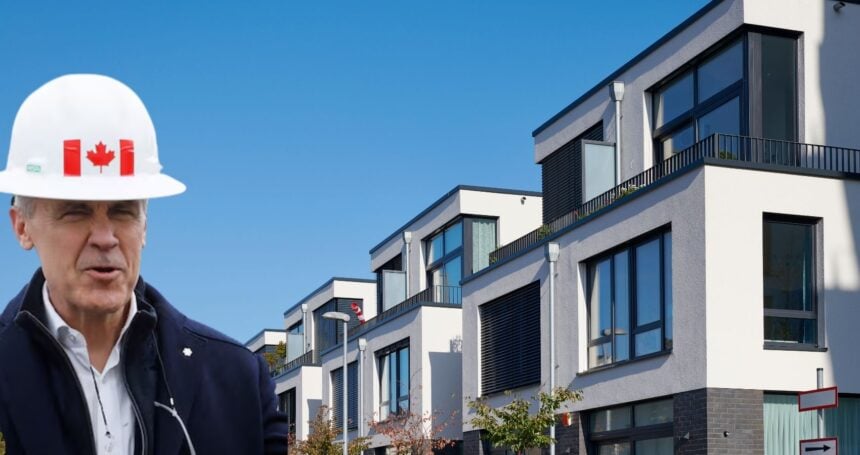Mark Carney’s proposal for a federal goods and services tax rebate on new housing is drawing attention as Canada continues to grapple with an affordability crisis.
The measure would reduce construction costs for developers, but analysts warn the relief will do little to make homes more accessible to average buyers.
Carney, the former Bank of Canada governor and now a Liberal candidate, has argued that waiving the GST on new builds would encourage more supply and help tame soaring prices.
The plan echoes measures introduced by Prime Minister Justin Trudeau last year, which eliminated GST on purpose-built rental projects.
Industry reaction at that time suggested the change could marginally improve project economics, especially in high-cost urban centers, but the impact on end prices for tenants was limited.
Housing economists note that in markets like Toronto and Vancouver, where demand far outstrips supply, the small reduction in construction costs is unlikely to filter down to buyers.
Developers often price new units based on what the market will bear rather than the cost of materials and labor. Tax relief at the builder level may improve margins, but it rarely translates to lower sale prices in hot markets, one analyst said in a recent interview.
There is also a timing challenge. Even if the rebate helps green-light more projects, it could take years before those units come onto the market.
Meanwhile, buyers continue to face elevated mortgage rates and tight inventories, which are the main drivers of affordability pressure. The Bank of Canada has signaled that rate cuts may be gradual, suggesting that financing costs will remain a significant hurdle through at least 2025.
Supporters of the rebate argue that every incentive matters at the margins, particularly for rental housing, where developers have been shelving projects due to rising construction and borrowing costs.
A GST break can improve feasibility enough to keep some projects alive. Critics counter that without broader reforms, such as zoning changes and infrastructure investment, tax tweaks will not move the needle on affordability in a meaningful way.
The debate underscores the structural nature of Canada’s housing challenge. Policies that shave a few percentage points off costs may aid supply growth at the edges, but they do not address the fundamental imbalance between demand and available units. Until that gap narrows, affordability is likely to remain elusive despite targeted tax relief.



















